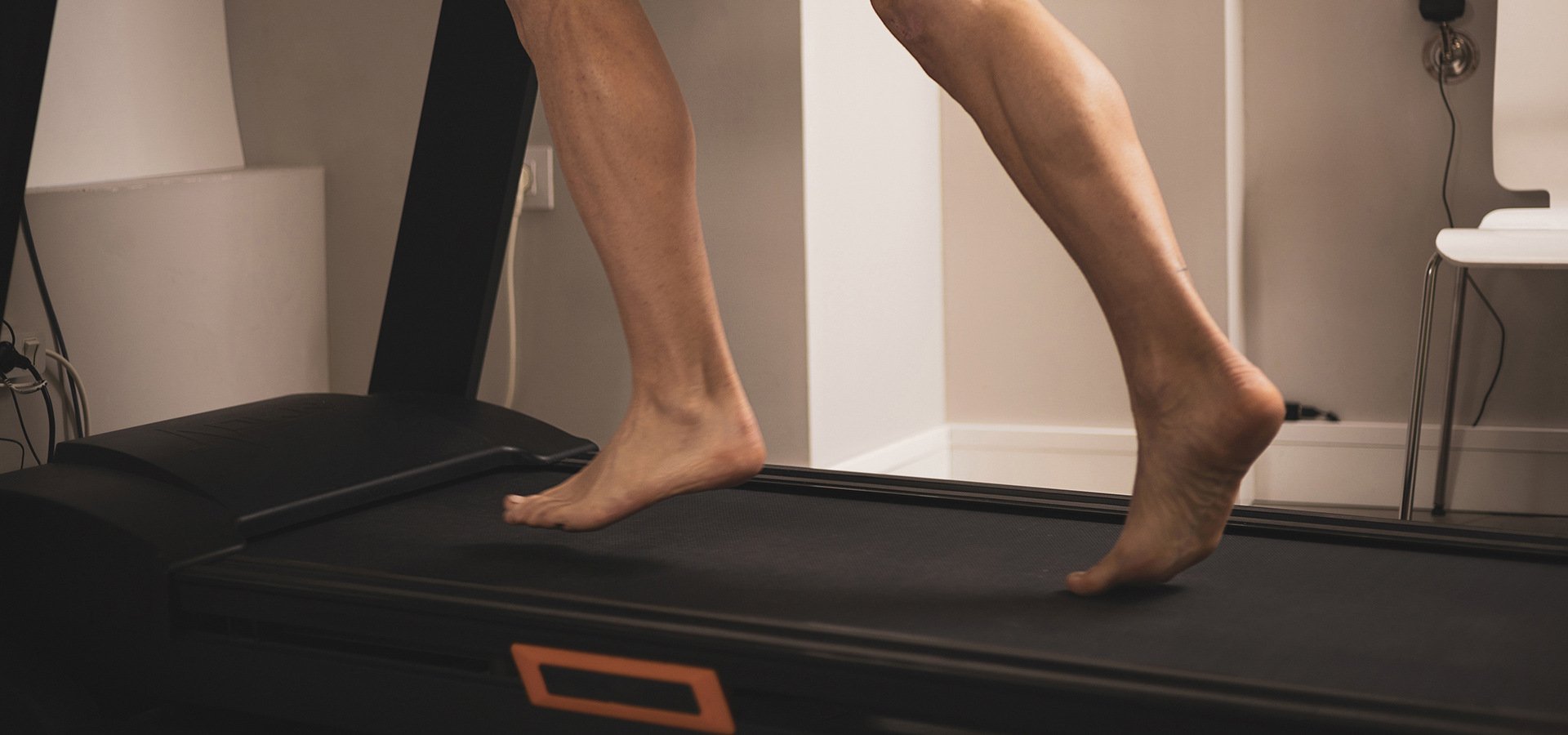
Equipment for Gait Research
Since our ancestors first came down from the trees and took their first upright steps about seven million years ago, humanity has relied on bipedal movement.
After all, walking and running are more than ways of getting from A to B. These basic modes of locomotion help us spend time with friends and family, get work done, beautify our homes and gardens, blow off steam, and have fun. Folks who can walk and run normally tend to be healthy and happy. At the same time, those with restrictions, injuries, and disorders are frustrated – at least until they can figure out how to accommodate an unnatural gait.
Due to the importance of movement to our species' identity, gait research holds an equally prominent place in clinical and sports medicine.
However, while it is all very good to define something as important, you must back that up with good data, which means good equipment. You need tools that can identify tiny issues, monitor them over time, and help you tailor treatments big and small that will help address such problems and improve patient outcomes.
If you are a clinician or sports performance professional who defines workflows or research protocols that include plantar pressure and gait data, what kind of equipment does that include? Let us look, first discussing the world of gait research today before turning our attention to the most critical components of gait research, goals and challenges impacting the industry, and what a complete gait-mapping solution looks like.
The World of Gait Research Today
It is no secret that gait is inextricably linked to health. Its implications for cardiovascular and metabolic health conditions are huge, matched only by those for musculoskeletal and neurological issues. From better sports performance to healthier elderly populations, gait figures into every corner of the medical society. Unfortunately, the gait research and application world has not expanded as much as it should have.
"Despite being available for more than three decades, quantitative gait analysis remains largely associated with research institutions and not well leveraged in clinical settings," explain the authors of "Present and future of gait assessment in clinical practice: Towards the application of novel trends and technologies," published in Frontiers in Medical Technology.
"This is mostly due to the high cost/cumbersome equipment and complex protocols and data management/analysis associated with traditional gait labs," the authors continue, "as well as the diverse training/experience and preference of clinical teams. Observational gait and qualitative scales remain predominantly used in clinics despite evidence of less efficacy in quantifying gait."
In other words, gait researchers must design better data-based protocols that clinicians and therapists can use in real-world settings. Otherwise, they will keep relying on visual assessments that do not serve the overall needs of the population. That is not to say gait researchers are letting everyone down. On the contrary, they work hard, producing some of the most innovative insights and treatments.
It does indicate, however, that gait research needs to be more useful for the average clinician or therapist, athletic director, or coach, who will ultimately implement that research. What does this mean, then, for researchers?
Gait Research Equipment: Goals and Challenges
Unfortunately, treatment protocols today remain unstandardized. That means that integrating equipment and using it to draw meaningful conclusions can be dicey. Other challenges include:
- Incorrect or difficult diagnoses and treatments;
- Ineffective research protocols;
- Difficult lab technician training;
- Unreliable equipment; and
- Poor patient, caregiver, and athlete education.
Luckily, good equipment can help fix this.
Critical Components of Gait Research Equipment
To improve the overall sphere of gait analysis in sports and medicine, researchers need to create repeatable, dependable, and quantitatively meaningful protocols. They must map exceedingly complex biomechanics into 3D visualizations and data streams that help generate insight and benefit human bodies.
To collect the pertinent quantitative measurements, they need equipment that will:
- Analyze gait in any member of the population, varying from healthy individuals with a sports injury to amputees who are just learning to walk again.
- Help validate tests, diagnoses, interventions, and outcomes.
- Measure movement while walking, running, standing, performing athletic movements, or completing everyday tasks.
- Pair usefully with other measurement systems.
- Work with tablets, mobile phones, wearable technology, and smart devices of all kinds.
- Communicate with AI-driven software systems that help construct meaningful pictures from raw gait data, offer 3D modeling and imagery, and help researchers form conclusions quickly.
- Operate wirelessly to prevent the encumbrance of wires from changing movement.
- Contribute to the overall body of gait research that exists today, helping labs, clinics, and athletic departments move away from tired strategies and toward the future.
You need equipment that measures stride length, frequency, cadence, step width, heel strike, joint forces, and pressure. Each of these factors helps researchers determine healthy gait, potential issues, diagnoses, and possible treatment protocols.
Whether your research contributes to interventions, footwear, athletic performance, or anything else, you cannot afford to miss even one piece of data. If you are looking for a paradigm shift in the way you conduct gait research in your lab, then it is time to consider XSENSOR.
Stop Missing Details with XSENSOR's Complete Gait-Mapping Solution
If you're tired of inefficient or incomplete gait analysis systems and want a better way to map plantar pressure and collect research data, XSENSOR is here to help. Our Intelligent Insoles | Pro is the gold-standard gait mapping system for clinical and performance researchers, enabling you to capture lab-quality data from anywhere.
That is right: You can leave the office and take your research to the field, free of wires and restraints, to collect information in the real world. With the one-two punch of powerful hardware/software, you can also say goodbye to the challenges of integrating systems and getting them to communicate. XSENSOR technology comes out of the box calibrated, integrated, and ready to go.
Ready to take your research to the next level? Get in touch today.
